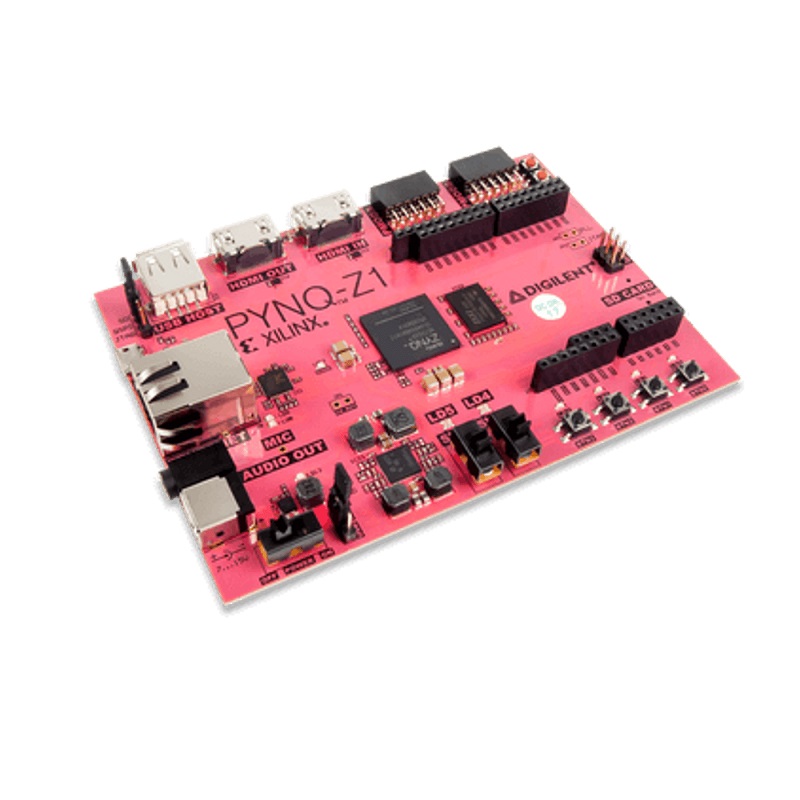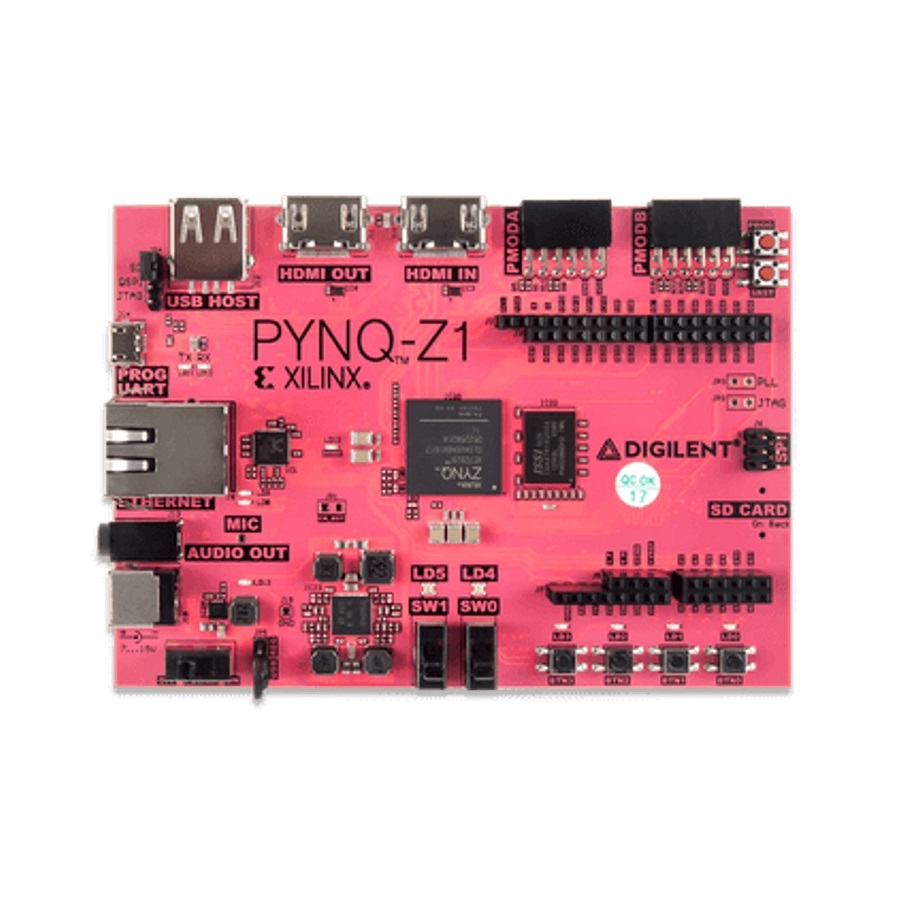The PYNQ-Z1 board is designed to be used with the PYNQ open-source framework that enables embedded programmers to program the onboard SoC with Python. It is designed around the Xilinx Zynq®-7000 SoC, which combines the programmable logic of an FPGA with a dual-core ARM Cortex™-A9 processor.
Hardware-wise, the PYNQ-Z1 is flexible and ready-to-use. It is similar in form factor and features to Digilent’s Arty Z7, featuring popular Arduino™ headers, Pmod ports, onboard I/O, HDMI in/out, audio out, and USB and Ethernet connectivity. This makes the PYNQ-Z1 a versatile and easily customizable SoC development platform for applications such as computer vision, industrial control, IoT, encryption, and embedded computing acceleration.
Features:
-
ZYNQ XC7Z020-1CLG400C
-
650MHz dual-core Cortex-A9 processor
-
DDR3 memory controller with 8 DMA channels and 4 high performance AXI3 slave ports
-
High-bandwidth peripheral controllers: 1G Ethernet, USB 2.0, SDIO
-
Low-bandwidth peripheral controller: SPI, UART, CAN, I2C
-
Programmable from JTAG, Quad-SPI flash, and microSD card
-
13,300 logic slices, each with four 6-input LUTs and 8 flip-flops
-
630 KB of fast block RAM
-
4 clock management tiles, each with a phase-locked loop (PLL) and mixed-mode clock manager (MMCM)
-
220 DSP slices
-
On-chip analog-to-digital converter (XADC)
- 512 MB DDR3 with 16-bit bus @ 525 MHz (1050 MT/s)
- 16MB Quad-SPI Flash with factory programmed globally unique identifier (48-bit EUI-48/64™ compatible).
-
16 Total FPGA I/O
-
49 Total FPGA I/O
-
6 Single-ended 0-3.3V Analog inputs to XADC
-
4 Differential 0-1.0V Analog inputs to XADC
Package Includes:
1 x Digilent PYNQ-Z1: Python Productivity for Zynq-7000 ARM/FPGA SoC













There are no reviews yet.